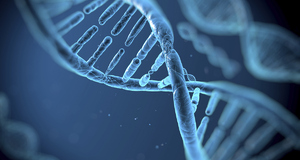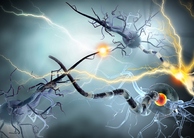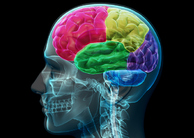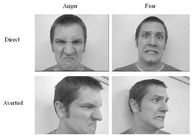From Discussions VOL. 11 NO. 1How the Electrical Activity and Synaptogenesis of Neurons Contribute to the Efficacy of Neurofeedback Therapy
IN THIS ARTICLE
KEYWORDS
AbstractNeurofeedback Therapy (NFT) is a type of biofeedback therapy specifically targeting the brain and nervous system. According to the Mayo Clinic, biofeedback is defined as a technique one can use to learn to control the body’s functions, done usually by connecting one’s body (bio) to electrical sensors that help you receive information about it (feedback). This can help people focus on making subtle changes in their bodies, such as relaxing certain muscles to achieve certain results, such as pain reduction. Subsequently, the Task Force on Nomenclature specified that the presentation of information on the functioning of one’s brain partnered with changes in thinking, emotions, and behavior, support desired physiological changes. By examining a variety of studies, from ones that sought to quantify the changes in white and gray matter after NFT to those that examined the increased neurogenesis of mice living in enhanced environments to those that tried to understand the neural activity underlying brain waves, this review seeks to elucidate the quantifiable evidence that may underlie, and thus explain, the emerging efficacy of neurofeedback therapies. These studies led to the conclusion that there are biological changes taking place during NFT, though only a few have yet come to light. Of these, synaptogenesis and the varied electrical activity of neurons appear to explain how some of this brain modification, or neuroplasticity, occurs. This paper aims to explore the biological substrates underlying the therapy of neurofeedback, which already has demonstrated to have therapeutic and clinical implications for ailments ranging from Attention Deficit Disorder (ADD) to Carpal Tunnel. According to the International Society for Neurofeedback Research, Neurofeedback Therapy uses monitoring devices to provide individuals with information on the state of their physiological functioning, specifically focusing on the nervous system and the brain (Figure 1). Discovering how neurofeedback works is significant because the better understanding of it there is, the more precisely it can be used therapeutically. However, though current understanding of it is not very extensive, neurofeedback therapy (NFT) has already been shown to be clinically efficacious. In previous studies using subjects with ADD, it has been shown that NFT aiming to increase beta brainwaves (those associated with concentration and focus) while trying to minimize theta brainwaves (daydreaming, inattention) , can lead to a reduction in impulsivity and hyperactivity, thus contributing to an improvement in attention (Monastra, 2002). While the effects of pharmaceuticals are typically short lived and it can often take weeks for a patient to experience results, NFT can last for months after the training takes place, depending on how intensive the training. It is also much less invasive than any form of surgery. So, though it takes a number of neurofeedback training sessions to see results, it is less invasive, longer term, and has significantly fewer side effects than either pharmaceuticals or surgery. However, for this type of therapy to be taken seriously, its mechanisms of action need to be understood. Not only should this lead to more accurate and specific usages, but also it should make it more easily accepted as a form of therapy. Firstly, this paper will discuss the methods of recording neural activity and imaging the brain, and how they apply to neurofeedback therapy. The methods included are electroencephalography (EEG), magnetic resonance imaging (MRI), functional MRI (fMRI), diffusion MRI (dMRI), and Diffusion Weighted Imaging (DWI). While EEG and fMRI are used to record more “real-time” data, MRI is usually used to form images and view the internal anatomy of parts of the body (Hollingworth, et al). It is of great utility for measuring volumes in certain areas of the brain, since it can distinguish between white and gray matter and its images are 3-D, measured in units of voxels (like a pixel, but three dimensional). dMRI is typically used to examine white matter (Hagmann et al, 2006), while DWI is more commonly used for gray matter (Le Bihan, et al. 1986). Secondly, brainwaves and the distinctions between the different types will be explained. Because alpha and beta brainwaves are primarily used in the neurofeedback therapies examined, these will be focused on. These two brainwaves are observed and used more extensively because alpha activity is thought to reflect attentional demands (Basar, 1997) and beta activity is though to reflect cognitive processes, so they both have clear implications in disorders such as ADD (Cole and Ray, 1985) and general improvement of mental processing. Lastly, but perhaps most importantly, this article will examine how electrical activity of neurons and synaptogenesis influence the neuroplasticity that underlies the clinical efficacy of neurofeedback therapy (NFT). The term electrical activity refers to the speed of action potentials, or electrical conduction, and the rates at which they occur (Ghaziri, 2013), both factors that influence the type of brainwaves EEGs detect and record. On the biological side of things, it has been shown that changes in electrical activity can influence the myelination of axons (Ghaziri, 2013). Synaptogenesis refers to a positive change in synapse number, and sometimes includes changes in morphology (Markham and Greenough, 2004). Because neurofeedback can be seen as a way of enhancing ones environment, it makes sense that there would be increased neuroplasticity, as previous studies have repeatedly shown that mice placed in “enriched environments” containing paper, toys, and nesting materials, had more hippocampal neurons than those who were housed in empty cages (Kempermann, 1997). Both changes in axon myelination and synapse formation have been found as a result of neurofeedback therapy, and thus provide quantifiable evidence that supports the idea that it induces long-term neuroplasticity that is essential to the clinical effects. Figure 1: The basic components and processes of a neurofeedback paradigm. The transform algorithm is part of the brain-computer interface that transforms neural signals into visual feedback on a screen, such as moving a cursor. Methods of Neurofeedback TherapyElectroencephalography works through strategically placing electrodes on parts of the scalp and recording electrical activity and quantifying it in terms of brainwaves, the type of which depends on the frequency of the electrical activity. These voltage fluctuations result from the ionic current flows within the neurons of the brain (Niedermeyer, 2004). Magnetic Resonance Imaging (MRI) uses magnetic fields and radiowaves to form images of and examine the anatomy of different parts of the body. It allows for the diagnosis and treatment of many conditions in the medical field, however, neurofeedback therapy is most concerned with its ability to provide contrast between white and gray matter (Hollingworth, et al). fMRI takes the technology of normal MRIs, and adds a real-time functional capability to it; it measures brain activity by detecting changes in blood flow to different regions of the brain. This technique is based upon the fact that blood flow in the brain and neuronal activity are correlated and that the blood oxygen level changes in areas in which it is being used (Huttel, 2009). However, the unit of measurement of the fMRI, a voxel, is 3mm x 3mm x 3mm, which is quite large compared to the size of a neuron, and it records data every 1-2 seconds, which is also very slow compared to the speed of electrical transmission along axons and between neurons. For these reasons, it is not a very specific form of measurement, though it has proven successful in some brain training methods (deCharms, 2007). Diffusion MRI (dMRI) is used to provide images of white matter structure and models of brain connectivity by mapping the diffusion process of various molecules, such as water, invivo and non-invasively (Hagmann, et al, 2006). This form of imaging allows researchers to view the changes in white matter by measuring the volume at the beginning and end of experimental trials. Diffusion weighted imaging (DWI) is similar, except that it is primarily used for measuring gray matter (Le Bihan, et al. 1986). So, to record activity of the brain and conduct neurofeedback therapy, EEG is used. By connecting the EEG electrodes placed on the scalp to technology that monitors the electrical output and sends it to brain-computer interface software that transforms the neural activity into some form of visual feedback, such as a moving cursor, patients can view and attempt to manipulate their brainwaves and investigators can study the recording patterns (Fetz, E.E., 2007). To record the brain volume in order to measure changes in it, MRI, dMRI, or DWI, are typically used. These methods allow neurofeedback therapy to happen, and for its neuronal effects to be measured and quantified. Brainwaves: What are They and What do They mean?Currently there are five types of brainwaves known: these are delta, theta, alpha, beta, and gamma. Each represents different frequencies of electrical activity, which are recorded by EEG machines. Gamma waves are the highest frequency waves, usually recorded around 20- 80Hz (Bressler, S.L. 1990), while delta and theta are the slowest, at 0-3Hz and 4-7Hz respectively. However, most neurofeedback therapy targets beta brainwaves, which are recorded at 16-25 Hz and dominate focused waking states when attention is aimed at cognitive tasks and problem solving. When the brain is awake and alert, but not problem solving, alpha brainwaves, between 8-12 Hz, dominate (Cole and Ray 1986). Not much is known about brainwaves, aside from the fact that they are due to the electrical activity of neurons and that, as previously stated, certain ones correlate to certain mental states. However, by focusing on targeting the brainwave associated with whatever mental state one hopes to practice maintaining (i.e. Beta for paying attention and problem solving), it is possible to use neurofeedback to ameliorate conditions such as ADD.Continued on Next Page » Suggested Reading from Inquiries Journal
Inquiries Journal provides undergraduate and graduate students around the world a platform for the wide dissemination of academic work over a range of core disciplines. Representing the work of students from hundreds of institutions around the globe, Inquiries Journal's large database of academic articles is completely free. Learn more | Blog | Submit Latest in Neuroscience |


















